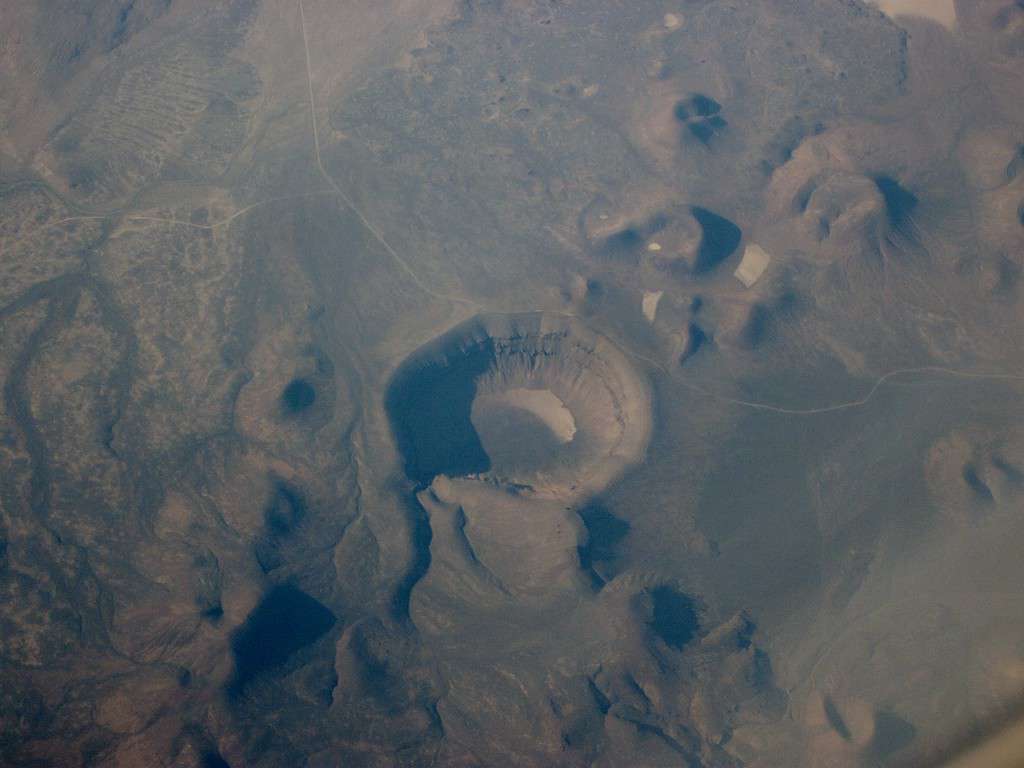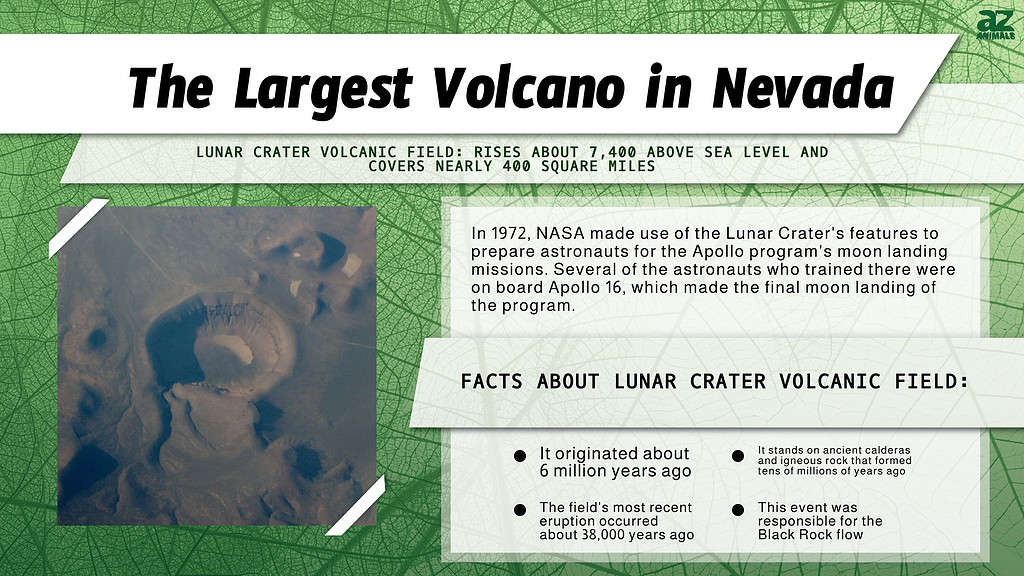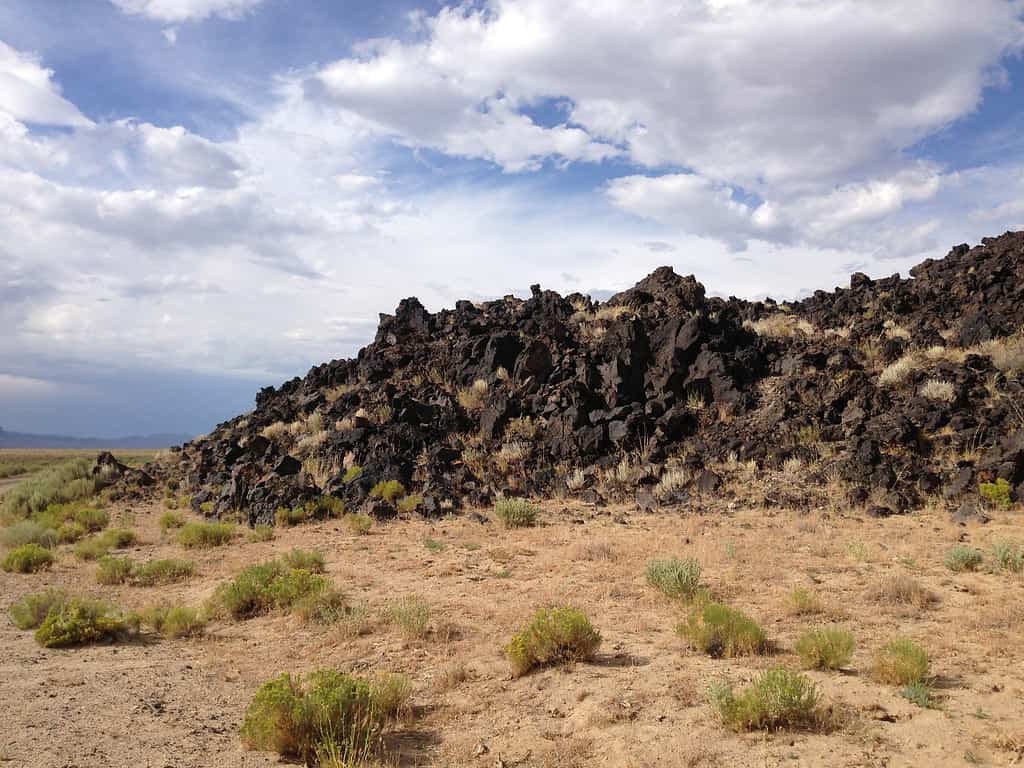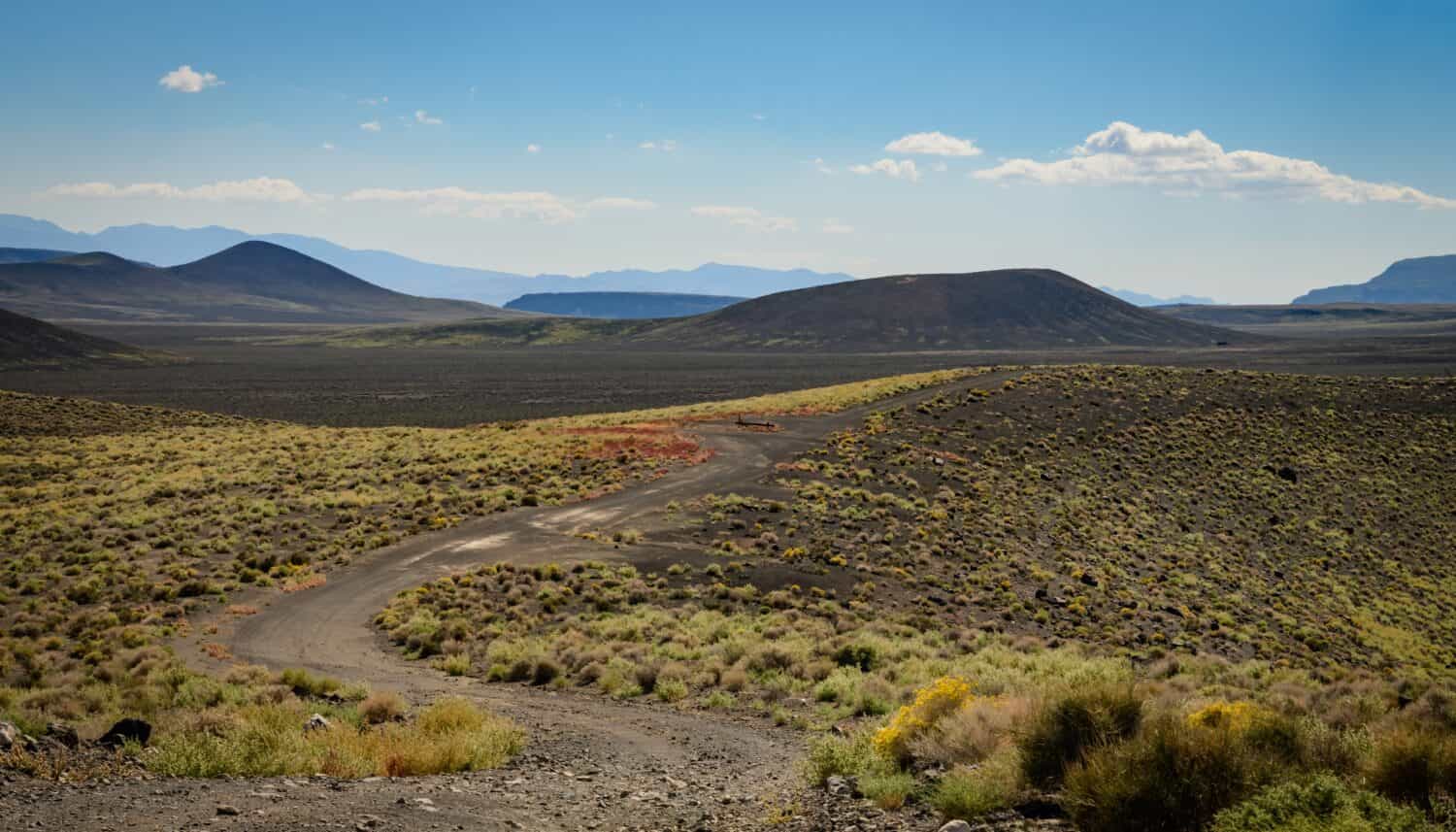With much of the state situated within the Great Basin, Nevada is no stranger to volcanic activity. For hundreds of millions of years, the region has been the subject of intense tectonic events that have built its mountains and torn the land apart, leaving valleys in their wake. These same massive shifts in the Earth’s crust that shaped the state’s dramatic landscape have also caused their fair share of high-magnitude earthquakes and massive eruptions.
Nevada is home to several large volcanic features, some of which haven’t yet gone extinct and may still erupt in the future. In this article, we’ll find out which of these is the largest volcano in the state and find out when it last erupted. We’ll also find out how to visit it and what wildlife, if any lives nearby.
What is Nevada’s Largest Volcano?
Nevada’s Lunar Crater volcanic field is far and away the state’s largest volcanic feature. Though it isn’t the tallest, the massive field rises roughly 7,400 above sea level and covers nearly 400 square miles. It originated about 6 million years ago, producing miles of impressive lava flows and more than 100 individual eruption sites.
Many of these sites are extinct cinder cones that formed in long chains across the field. These types of volcanoes form as lava and rock fragments shoot from the Earth’s surface and build up around their source. While they can project ash and rock great distances, cinder cones are the smallest and shortest-lived volcanoes. They often last only a month or so but can rarely erupt for as long as a year. Once pressure dissipates and they have finished erupting, the channel beneath them solidifies and halts the flow of magma. The field’s Marcath cone, or Black Rock, is a great example of a cinder cone.

The Lunar Crater volcanic field is huge, spanning hundreds of square miles. Lunar Crater (center), the field’s largest feature, covers about 400 acres on its own!
The largest eruption site in the volcanic field is Lunar Crater itself. The 3,300-foot-wide maar is the result of a type of steam explosion called a phreatomagmatic eruption. Some of these eruptions occur when water makes contact with magma beneath the Earth’s surface. When the water interacts with the magma, it rapidly turns to steam which builds up beneath the ground. Eventually, the earth gives way, releasing the steam pressure in a massive explosion. Oftentimes, these explosions will occur for weeks at a time. The event that caused Lunar Crater left a hole in the Earth, called a diatreme, over 400 feet deep!

When Did the Largest Volcano in Nevada Form?
The Lunar Crater volcanic field formed atop the remnants of much older volcanic activity. It stands on the shoulders of giants — ancient calderas and igneous rock that formed tens of millions of years ago. Though the exact age of these ancient eruptions is uncertain, geologists have been able to date them back to the Oligocene and Miocene epochs.
While volcanic activity has taken place in the region for many millions of years, the field as we know it today only formed about 6 million years ago. Due to the erosion that has worn away at many of the field’s structures, however, it is difficult to pinpoint when many of the eruption events occurred. We do know, however, that the field’s most recent eruption occurred about 38,000 years ago, give or take several millennia. This event was responsible for the Black Rock flow, which emanates from the young and well-preserved Marcath cinder cone.

The most recent lava flow, in the photo above, occurred during the Pleistocene Epoch, about 38,000 years ago.
Where is the Lunar Crater Volcanic Field Located on a Map?
As Nevada’s largest volcano complex, the Lunar Crater volcanic field is a cherished place, ranking among the state’s six National Natural Landmarks! There’s more than just natural history there, however. In 1972, NASA made use of the Lunar Crater’s features to prepare astronauts for the Apollo program’s moon landing missions. Several of the astronauts who trained there were on board Apollo 16, which made the final moon landing of the program.
Though it is quite out of the way of many more frequented destinations, Nevada’s largest volcano complex is absolutely worth the visit. It sits along U.S. Route 6, about 80 miles to the east of Tonopah. The Lunar Crater Backwoods Byway begins around mile marker 79 and takes visitors about 8 miles off the beaten path into the desert where it passes by the overlook at the Lunar Crater maar. From here, visitors can take in the breathtaking views of the expansive crater and take a contemplative look into the Earth’s chaotic, volcanic past.
If you want to check out this incredible artifact of the Earth’s history, you’d better be prepared. The journey to the crater is quite long and there are no stops between the destination and the nearest town. You’ll need to make sure you’ve got plenty of food, water, and fuel in case of emergency. While it is accessible by car, it is important to note that the scenic Backwoods Byway is unpaved and consists of dirt, gravel, and sand. Road conditions can be difficult at times and four-wheel drive may be helpful.
Thank you for reading! Have some feedback for us? Contact the AZ Animals editorial team.









